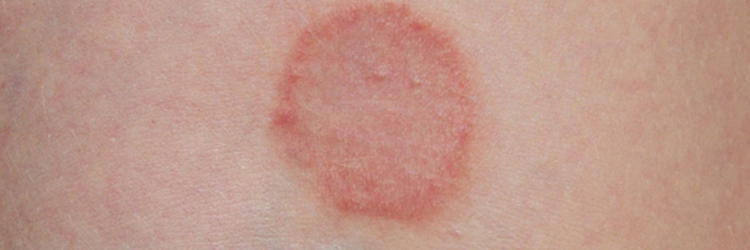While many of you may have heard of the disease ‘Ringworm’, not all of you would know what are the causes, symptoms, treatment and preventive measures. Moreover, some of you may even have some questions and also many misconceptions about this common skin condition. However, in reality, ringworm is not as bad as it sounds or the name suggests.
At the Skin and Hair Academy, we are here to clear your misconceptions and debunk any myths about ringworm and introduce you to the facts on this common skin condition.
Myth 1:
Ringworm is caused by a worm
Fact:
This is probably the most common myth that surrounds this skin condition. However, ringworm (also called tinea) is not actually caused by worms. It is caused by a group of fungi called dermatophytes which are the culprit for this skin infection. It derives its name from the distinctive red ring-like pattern it forms on the skin.
Myth 2:
Ringworm only affects the skin
Fact:
More often than not ringworm usually appears on the skin but that’s not the only place this skin infection affects. You will find red patches appear on the scalp and can also show signs on the fingernails and toenails. It hardens the nails and causes them to become yellow and brittle.
Myth 3:
Whoever is affected with ringworm develops red rings on their skin
Fact:
Although some people might develop the red ring on their skin, ringworm does not have the same effect on everyone. If you do get affected with ringworm, it may not necessarily be a ring but you might find red, scaly patches on your skin. On the other hand, if ringworm has affected your scalp, it could look like dandruff – scaly and flaky!
Myth 4:
Ringworm affects only children
Fact:
Children are most likely to get affected with ringworm however this skin infection can happen to anyone at any age.
Myth 5:
Ringworm is not contagious
Fact:
In fact, the opposite is true. Ringworm is a skin condition that can spread from person to person and even from animals to people. It usually thrives in moist conditions. Sometimes you don’t even have to touch someone to get infected with the disease. The fungus can exist in places such as swimming pools, locker rooms as well as on someone’s comb or brush. Just in case you share an infected comb or brush, you’re most likely to get infected with ringworm, especially on your scalp. This is why doctors advise you to stay away from those affected with this condition unless you know they are getting treatment for the same.
Myth 6:
Symptoms of ringworm will be seen immediately after you’ve been infected
Fact:
This is not true. In fact, it could actually take a few days for the red rash to appear on your skin. If your scalp is affected, it could take a good two weeks to see any signs of infection.
Myth 7:
Your pets cannot give you ringworm
Fact:
Your pet, as much as you, can get infected with ringworm and can pass it onto you as well. So, if you suspect your pet of having ringworm then you should take him to the vet immediately. Moreover, ensure you keep the infected pets away from other pets as well as your family. Make sure you wash your hands with warm water and soap every time you touch your pet until he’s free from infection.
Myth 8:
A flaky scalp means dandruff and not ringworm
Fact:
This is not completely true. More often than not, if the scalp is affected with ringworm it doesn’t necessarily form a red ring. It could just make the skin scaly and flaky just like dandruff so you have to consult a dermatologist either way and of course in case it shows no signs of reducing.
Myth 9:
Just the infected person needs to be treated for ringworm
Fact:
You must have already read above that ringworm is highly contagious and if you’ve been infected with the disease, it’s more than likely that other people in your home need to be treated too, even if they show no signs or symptoms of the condition.
Myth 10:
Antibiotics can treat ringworm
Fact:
Antibiotics work on bacteria. Since ringworm is caused by a fungus, they are unlikely to treat this skin condition. To treat ringworm you will need to use anti-fungal medicines and ointments. For the scalp, you will need to use a special shampoo and an anti-fungal medicine that is prescribed by the doctor.
Conclusion
Now that you know what are the myths and facts around ringworm, you will be able to spot the difference as well. If you want to get in touch with expert dermatologists regarding ringworm or any other skin infection that you’re dealing with, just visit the Skin and Hair Academy.














